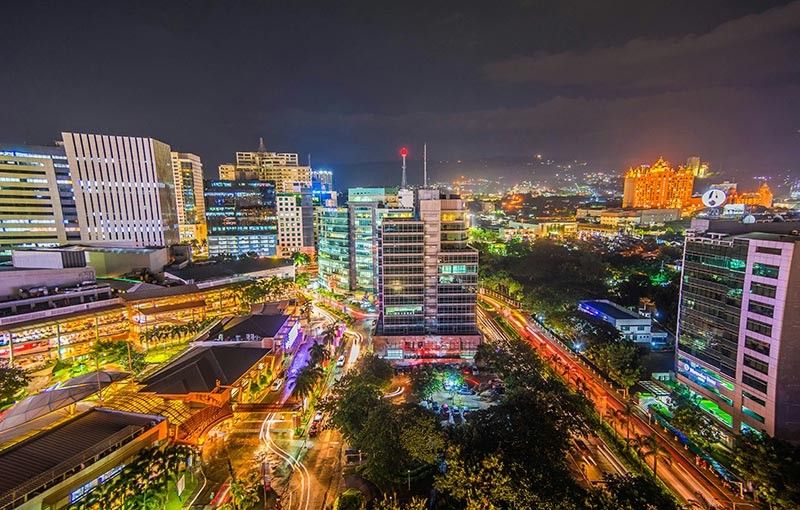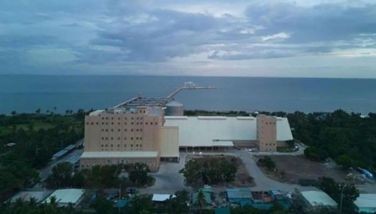Cebu’s rapid development, vision, imperiled by energy insecurity

MANILA, Philippines — Cebu retained its status as the country’s richest province for the ninth consecutive year in 2023. The Commission on Audit (COA) places its assets at P235.73 billion in 2022, with an increase of P20.43 billion from P215 billion in 2021.
This is largely through the growth of various industries including tourism, transportation, IT-BPM, agricultural sectors and processing, mining, water and telecommunications, which are supported by a skilled workforce.
Along these are government infrastructure projects such as the Mactan-Cebu International Airport, the Metro Cebu Expressway, and the Cebu-Cordova Link Expressway which will bring additional growth in the years to come.
Tourism is one of the biggest economic drivers of Cebu province. With its combination of beautiful beaches, mountain views, historical sites and colorful festivals, Cebu ranked first in the Department of Tourism’s 2023 nationwide survey of most preferred destinations among overnight travelers.
As of September 2023, Cebu recorded over two million local and foreign guest arrivals, a 28% growth from last year’s data with an estimated 1.9 million.
The IT-BPM sector is likewise thriving, with revenues posted at $32.5 billion, employing about 121,000 full-time employees in 2022. Two more IT Parks are being proposed in Cebu City, one along Pope John Paul II Avenue in Barangay Mabolo, Cebu City and another along the Cebu South Coastal Road in the South Road Properties (SRP).
These are projected to provide jobs for 15,000 employees once completed.
Aside from more office spaces being built to accommodate the IT sector’s workforce, investment management company Colliers also recorded growth in the residential segment with the take-up of 1,100 condominium units in Cebu in the affordable and lower mid-income segments.
It projects that condo unit prices in Cebu will grow by 3.5% from 2023 to 2027 as demand for higher-priced units stabilize.
Prior to the pandemic, the National Economic Development Authority (NEDA) identified Cebu’s potential for new investments in heavy and extractive industries. This includes the expansion of shipbuilding and other allied activities in the western seaboard of Cebu, car manufacturing and car parts manufacturing, aerospace parts, resource-based industries and fabricated metals.
The feasibility and environmental sustainability prospects of extractive industries were also considered, particularly the mining of copper, dolomite, development of oil and gas reserves, coal reserves and renewable energy.
With investments coming in and world-class infrastructure in place, the vision for Cebu is to evolve into a “smart city,” harnessing the power of information and communications technology towards building inclusivity and sustainability in its communities.
Steady supply is crucial
As the Central Visayas Regional Development Council embarks on its six-year development roadmap, the local business and industrial sectors are calling attention to Cebu’s energy security needs.
The need for inland baseload power plants to satisfy Cebu’s demands and assure it sustains its rapid growth, independent of grid transmissions from neighboring regions.
Power shortages will set back Cebu’s growth, affecting thriving sectors such as its IT-BPM, tourism, real estate development and manufacturing industries. Major industry players will hesitate to invest in the province, if Cebu’s power supply will not meet the energy demands needed for its economic expansion.
A steep energy shortage will set back the gains of Cebu’s rapid development and potentially usher in a social crisis as an offshoot of job losses, business closures and poor social services.
As it stands, Visayas has the thinnest power reserves among the three island groups. In the aftermath of the Panay blackouts, the National Grid Corporation of the Philippines (NGCP) reported that as of January 26, Visayas had an available generating capacity of 2,411 megawatts (MW) and a system peak demand of 2,117 MW or a margin of only 269 MW as power reserves compared to 3,608 MW power reserves of Luzon and while Mindanao has 802 MW.
The NGCP says that Cebu accounts for half of the power demand of the Visayas region. Metro Cebu, specifically the four towns and four cities covered by the Visayan Electric franchise, accounts for half of the province’s demand. The NGCP said that as power consumption increases, Cebu will need additional power capacity.
Amid a Department of Energy Yellow Alert raised in the Visayas grid in May 2023 due to low power reserves, Cebu businesses grew concerned, with then-president of the Mandaue Chamber of Commerce and Industry (MCCI) Kelie Ko saying that power outages result in the loss of productivity, which eventually leads to loss of revenue.
The business sector chimes in
Citing the proposed 169 MW expansion project of Therma Visayas Inc. (TVI) in Toledo City, Cebu, Cebu Chamber of Commerce and Industry president Charles Kenneth Co said in a recent article: “More power supply is always better.”
MCCI president Mark Ynoc added, “When there is a pressing need for power then we definitely need additional generation capacity and infrastructure.”
He emphasized the role of power as a vital element in the ongoing economic recovery in preparation for the anticipated arrival of investments and increase in population.
- Latest




























